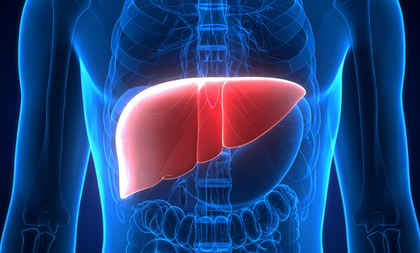New blood test to predict risk of liver cirrhosis, cancer within 10 years
By IANS | Updated: September 29, 2025 18:05 IST2025-09-29T18:00:28+5:302025-09-29T18:05:13+5:30
New Delhi, Sep 29 A newly developed blood test may aid in predicting the risk of developing severe ...

New blood test to predict risk of liver cirrhosis, cancer within 10 years
New Delhi, Sep 29 A newly developed blood test may aid in predicting the risk of developing severe liver disease within 10 years, according to a study.
The study, by researchers from the Karolinska Institutet in Sweden, showed that the simple blood analysis, if applied in primary care, may accelerate the detection of cirrhosis and cancer of the liver.
"These are diseases that are growing increasingly common and that have a poor prognosis if detected late," said Rickard Strandberg, affiliated researcher at the Institutet's Department of Medicine, who developed the test.
"Our method can predict the risk of severe liver disease within 10 years and is based on three simple routine blood tests," Strandberg added.
For the study, published in the journal The BMJ, the researchers evaluated how well the method can estimate the risk of severe liver disease.
The model -- CORE -- was produced with advanced statistical methods and is based on five factors: age, sex, and levels of three common liver enzymes (AST, ALT, and GGT), which are commonly measured during regular health checks.
"This is an important step toward being able to offer early screening for liver disease in primary care," said principal investigator Hannes Hagström, adjunct professor at Karolinska Institutet's Department of Medicine.
Hagström noted that even as drug treatment is available for treating people at a high risk of developing liver diseases such as cirrhosis or liver cancer, the new test may have significant potential.
The study is based on data from over 480,000 people in Stockholm who underwent health checks between 1985 and 1996, and were followed for up to 30 years.
The CORE model proved highly accurate and was able to differentiate between people who either did or did not develop the disease in 88 per cent of cases, the team said.
Disclaimer: This post has been auto-published from an agency feed without any modifications to the text and has not been reviewed by an editor
Open in app